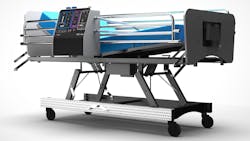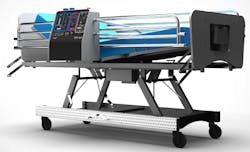“In the event of a severe influenza pandemic, the need for life-saving mechanical ventilation will far outstrip the ability to provide it.”
That foreboding opening line, clipped from a paper published in the journal Health Care Analysis back in 2011, might have been written today.
Globally, the growing number of patients critically ill with the coronavirus has escalated the need for ventilators to at least 10 times what’s available around the world, according to estimates. The United States has about 200,000 ventilators, yet 960,000 patients would need ventilator support in the U.S., according to The Society of Critical Care Medicine.
With the clock ticking, governments have ordered manufacturers to boost production, while rival ventilator makers acquiesce by peer-reviewing designs to accelerate efforts.
In Britain, Prime Minister Boris Johnson, who is on the mend after contracting COVID-19, had placed an order for 10,000 ventilator units from Dyson, the company best known for its vacuum cleaners.
Dyson’s founder, James Dyson, confirmed the order in an email to his employees. “Since I received a call from Boris Johnson ten days ago, we have refocused resources at Dyson, and worked with TTP, The Technology Partnership, to design and build an entirely new ventilator, The CoVent,” Dyson wrote.
The design and manufacture of a new ventilator would typically take many years and require complex components, but the Dyson-TTP team have condensed design and manufacture to a matter of weeks.
The ventilator meets clinician-led specifications to address the explicit clinical needs of COVID-19 patients, according to Dyson’s press office. The U.K. Government requested a design for a ventilator that was safe, effective, efficient in conserving oxygen, easy to use, bed-mounted, portable and not needing a fixed air supply.
Dyson and TTP answered the call with a bed-mounted, portable ventilator that operates on batteries so it can be used in different care settings, including field hospitals or when patients are transported. The unit is powered by Dyson’s digital motor, which has been specially re-engineered to meet the requirements of the ventilator. The fan units are available in very high volume and the unit conserves oxygen using a rebreathe circuit to deliver high-quality filtration.
According to James Dyson’s email, the company will further donate 5,000 units to the international effort, 1,000 of which will go to the United Kingdom.
The U.K.’s National Health Service (NHS) and Medicines and Healthcare products Regulatory Agency (MHRA) have been involved throughout the process. However, there’s no word yet on final regulatory approvals, and Dyson’s press office has yet to confirm the date of delivery.
For a video update on the Dyson CoVent project, click here.
About the Author

Rehana Begg
Editor-in-Chief, Machine Design
As Machine Design’s content lead, Rehana Begg is tasked with elevating the voice of the design and multi-disciplinary engineer in the face of digital transformation and engineering innovation. Begg has more than 24 years of editorial experience and has spent the past decade in the trenches of industrial manufacturing, focusing on new technologies, manufacturing innovation and business. Her B2B career has taken her from corporate boardrooms to plant floors and underground mining stopes, covering everything from automation & IIoT, robotics, mechanical design and additive manufacturing to plant operations, maintenance, reliability and continuous improvement. Begg holds an MBA, a Master of Journalism degree, and a BA (Hons.) in Political Science. She is committed to lifelong learning and feeds her passion for innovation in publishing, transparent science and clear communication by attending relevant conferences and seminars/workshops.
Follow Rehana Begg via the following social media handles:
X: @rehanabegg
LinkedIn: @rehanabegg and @MachineDesign


![James Dyson, founder of Dyson, said, “The race is now on to get [ventilators] into production.” James Dyson, founder of Dyson, said, “The race is now on to get [ventilators] into production.”](https://img.machinedesign.com/files/base/ebm/machinedesign/image/2020/04/Side_white__NO_MODE_.5e971ac5d6617.png?auto=format,compress&fit=max&q=45?w=250&width=250)